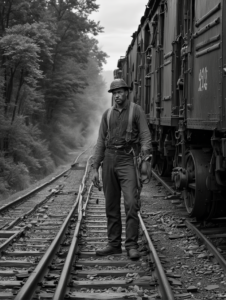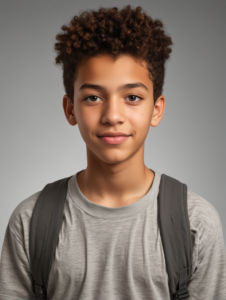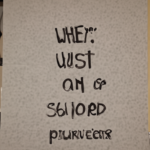Book Link 23 Video: Getting to Know Your Brain
<back next> — index
At the end of this lesson you should be able to:
- Identify major brain parts and their impact on behavior.
- Analyze Phineas Gage’s case to evaluate brain damage.
- Appreciate the human brain’s complexities and its impact.
Parts of the Brain
There are several major parts of the brain. Five of these are:
1. Cerebrum: Responsible for thinking, perceiving, and understanding language.
2. Cerebellum: Coordinates movement, balance, and posture.
3. Brain stem: Controls vital functions such as breathing, heart rate, and blood pressure.
4. Limbic system: Regulates emotions, memory, and basic instinctual drives.
5. Frontal lobe: Involved in decision making, problem solving, and control of emotions.
The human brain is a complex and fascinating organ that controls everything we do, think, and feel. It is divided into major parts, each carrying out specific functions essential for our everyday lives.
One of the most critical parts of the brain is the cerebrum, which is responsible for thinking, perceiving, and understanding language.
The cerebellum at the back of the brain is crucial in coordinating movement, balance, and posture. Another significant part of the brain is the brain stem, which connects the brain to the spinal cord and is essential for controlling vital functions such as breathing, heart rate, and blood pressure.
The limbic system, located deep within the brain, also regulates emotions, memory, and basic instinctual drives. Understanding these significant parts of the brain and their functions is crucial for comprehending how our brain shapes our experiences and behaviors.
 An interesting case study dealing with the brain centers on Phineas Gage. Phineas P. Gage (1823–1860) was an American railroad worker known for surviving an accident in which an iron rod went through his head, causing extensive brain damage. Read about Phineas Gage (Wikipedia).
An interesting case study dealing with the brain centers on Phineas Gage. Phineas P. Gage (1823–1860) was an American railroad worker known for surviving an accident in which an iron rod went through his head, causing extensive brain damage. Read about Phineas Gage (Wikipedia).
This injury changed his personality and behavior for the rest of his life. People who knew him even said he seemed like a different person. This event, often called the “American Crowbar Case,” made people in the 1800s talk a lot about how the brain works and how it affects who we are. It was one of the first cases to show that damage to specific brain parts can cause changes in a person’s mind.
Exploring the psychological facts about the brain can provide valuable insights into how our mind works and how we perceive the world around us. For high school students, learning about the brain and its functions can be a fascinating and enriching experience. By delving into the complexities of the brain, students can gain a deeper understanding of themselves and others and develop an appreciation for the marvels of the human brain. Integrating this knowledge into lessons can help students grasp the significance of brain functions and their impact on behavior and cognition.
A Day in the Life of a Student
This is a fictional story about a student – Adair.
In the morning, Adair’s cerebrum kicks into gear as they wake up and start thinking about the day ahead. They use their cerebellum to coordinate their movements as they get ready for school, ensuring good balance and posture while getting dressed. On the way to school, Adair’s brain stem takes care of vital functions such as regulating their breathing and heart rate, keeping them alive and well.
During classes, Adair’s cerebrum is hard at work as they think, perceive, and understand the lessons being taught. Their frontal lobe is involved in decision-making and problem-solving, helping them navigate various challenges throughout the school day. At lunchtime, Adair’s limbic system regulates their emotions and helps them enjoy socializing with friends.
After returning home, Adair’s cerebrum continues to be active as they work on homework and engage in conversations with family and friends. Later, during their leisure time, the limbic system also comes into play as Adair experiences emotions while talking with friends and playing video games.
As the day winds down, Adair’s cerebrum remains active, organizing thoughts and experiences from the day. During sleep, their brain processes these experiences, and the cerebellum may even play a role in their dreams, coordinating movement and balance in the dream world.
Throughout this “day in the life,” various parts of Adair’s brain work together, enabling them to navigate the challenges and experiences of high school and beyond.
Adair’s Vacation
This is another story about the fictional Adair. This story emphasizes the five senses. The parts of the brain that manage each sense are listed here followed by the story.
The Senses
6. Occipital lobe: The occipital lobe processes visual information and helps us interpret what we see.
7. Temporal lobe: The temporal lobe processes auditory information and is involved in memory and language comprehension.
8. Olfactory bulb: The olfactory bulb processes the sense of smell and interprets different odors.
9. Gustatory cortex: The gustatory cortex processes the sense of taste and identifies different flavors.
10. Somatosensory cortex: The somatosensory cortex processes the sense of touch and helps interpret tactile sensations from various boy parts.
The Story
Adair embarked on a thrilling vacation to the Rockies, excited to explore the breathtaking landscapes. As they gazed at the majestic mountain peaks and stunning vistas, their occipital lobe worked tirelessly to process the visual information, allowing them to fully appreciate the natural beauty around them.
During a visit to a local restaurant, Adair indulged in various delectable dishes, savoring the rich flavors and unique tastes. Their gustatory cortex came alive as they experienced the diverse culinary delights, allowing them to relish each distinct flavor and texture.
While hiking along the rugged trails, Adair felt the cool mountain air against their skin, the sensation of the refreshing breeze, and the warmth of the sunlight. Their somatosensory cortex played a crucial role in processing these tactile sensations, enhancing their connection to the natural environment.
As Adair ventured through fields of vibrant wildflowers and pine-scented forests, their olfactory bulb was activated, allowing them to revel in the invigorating aromas of the mountain flora, creating a sensory experience that was both captivating and memorable.
Throughout their Rocky Mountain adventure, the interplay of these brain parts enriched Adair’s vacation, heightening their sensory perceptions and creating lasting memories of their remarkable journey.
Adair’s Experiences Examined
Examine or review Lesson 40 about seven major psychological theory types, This section describes Adair’s normal school day and vacation through each of the theoretical lenses.
Psychodynamics
Psychologists might want to understand Adair’s personal growth and how they see themselves, focusing on their unique experiences and choices.
 From a psychodynamic perspective, Adair’s behaviors, thoughts, and emotions can be analyzed through unconscious drives and unresolved conflicts, shedding light on potential underlying motivations and influences from their past experiences.
From a psychodynamic perspective, Adair’s behaviors, thoughts, and emotions can be analyzed through unconscious drives and unresolved conflicts, shedding light on potential underlying motivations and influences from their past experiences.
Read more about Psychodynamics in Lesson 41.
Psychologists might study how Adair thinks, learns, and solves problems to understand how they see and respond to the world.
Cognitive psychologists would be interested in studying Adair’s mental processes, such as their perception, attention, memory, and problem-solving abilities, to understand how they interpret and respond to the world around them.
Read more about Cognitive Pyschology in Lesson 42.
Behavioral psychology
Psychologists might focus on how Adair’s actions are influenced by what happens around them and how they are rewarded or punished for their actions.
Behavioral psychologists would focus on observing Adair’s observable behaviors, ,the environmental factors that influence those behaviors, and the impact of rewards and punishments on shaping their actions.
Read more about Behavioral Psychology in Lesson 43.
Humanistic psychology
Psychologists might want to understand Adair’s personal growth and how they see themselves, focusing on their unique experiences and choices.
Humanistic psychologists would seek to understand Adair’s unique experiences, personal growth, and self-actualization, emphasizing their capacity for free will and the importance of subjective perceptions in shaping their behavior.
Read more about Humanistic Psychology in Lesson 44.
Biological psychology
Psychologists might study how Adair’s brain and body affect their behaviors and senses, and how their genes and biology interact with their environment.
Biological psychologists would examine the role of Adair’s brain structures, neurotransmitters, and genetic factors in influencing their sensory experiences and behaviors, as well as how these biological processes interact with their environment.
Read more about Biological Psychology in Lesson 45.
Socio-cultural psychology
 Psychologists might explore how Adair’s behavior is shaped by their culture, society, and relationships with others.
Psychologists might explore how Adair’s behavior is shaped by their culture, society, and relationships with others.
Socio-cultural psychologists would explore how Adair’s behavior and experiences are shaped by their cultural background, social norms, and interpersonal relationships, recognizing the impact of societal and cultural influences on their development.
Read more about Socio-cultural Psychology in Lesson 46.
Evolutionary psychology
Psychologists might analyze how Adair’s behaviors and senses are influenced by how humans evolved to survive and reproduce in the past.
From an evolutionary perspective, psychologists would analyze how Adair’s behaviors and sensory experiences may be influenced by evolutionary adaptations, such as the role of sensory perception in promoting survival and reproductive success in ancestral environments.
Read more about Evolutionary Psychology in Lesson 47.
Summary
In this lesson, we learned about the major parts of the brain and their impact on behavior. We explored the functions of the cerebrum, cerebellum, brain stem, limbic system, and frontal lobe. We also looked at Phineas Gage’s case to understand how brain damage can affect a person’s personality and behavior. By understanding these concepts, we gained insights into how our brain shapes our experiences and behaviors.
Additionally, we learned about Adair’s day and vacation, which helped us see how different parts of the brain work together in everyday life. We also explored the five senses and the specific parts of the brain responsible for processing visual, auditory, olfactory, gustatory, and somatosensory information. Understanding these concepts helps us appreciate the marvels of the human brain and how it impacts our daily lives.